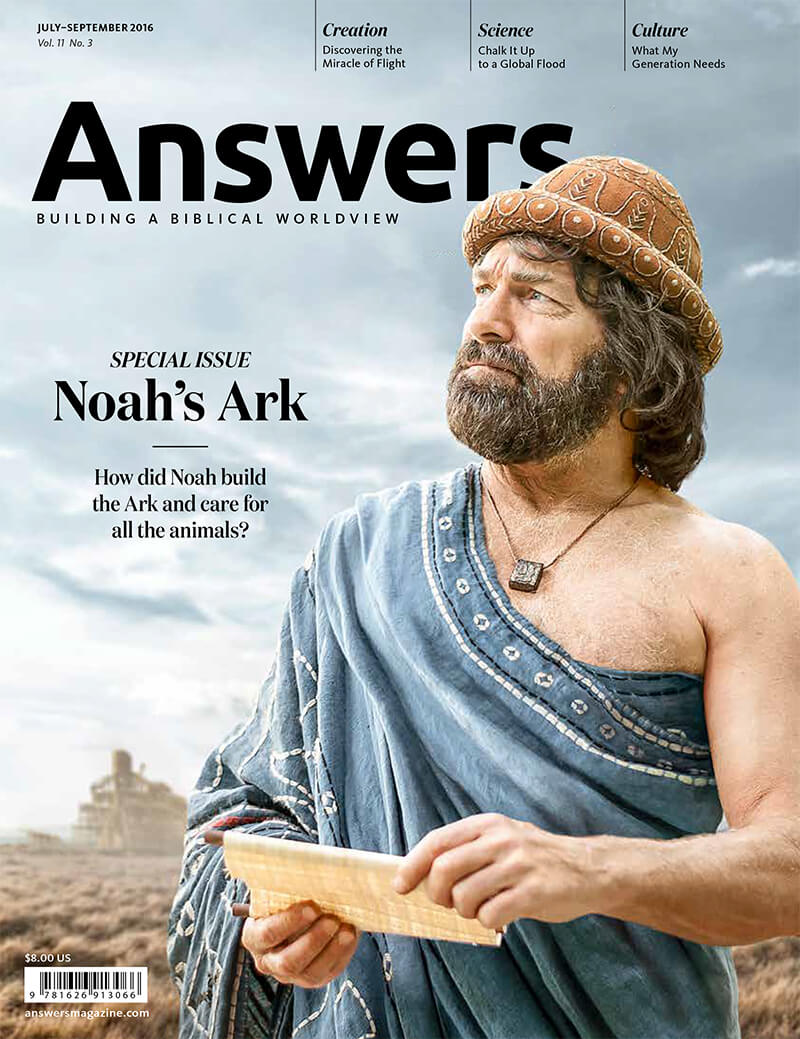Birdbrained Breakthrough
Creation on Display: Biomimicry
How can we better protect athletes from concussions? A newly discovered woodpecker design may help.
The long-term dangers of concussions have rocked the world of contact sports, especially among American youth football leagues. In addition to causing temporary unconsciousness, concussions can damage brain cells and disrupt the brain’s chemistry. Repeated concussions may lead to a condition known as chronic traumatic encephalopathy, or CTE, a degenerative disease that begins with headaches and disorientation, followed by memory loss, erratic behavior, impeded speech, and finally dementia.
Our brain is a delicate bowl of Jell-O, sloshing around the inside of our thick protective skull. For added safety, it is surrounded, somewhat like the yolk of an egg, by a layer of cerebrospinal fluid. But a hard collision overpowers these safety features, causing the brain to crash against the inside surface of the skull.
In recent years, high-tech sports helmets have come a long way to protect the brain. A key inspiration has come from an unlikely source. Deep in the forest, a small creature with a tiny brain and spongy skull has shed light on how to build lightweight, superhuman brain gear.
The woodpecker slams its head into a tree dozens of times per second. At impact, the sudden deceleration produces a force that is many times the bird’s total body weight. For a human being, such a blow would be fatal, but this living jackhammer takes it all in stride. So how does the woodpecker survive unshaken?
Tongue Tied
The answer is a creation classic. Many woodpecker species have an extended tongue with a root that wraps completely around the skull. The tongue acts as a shock absorber for the brain. This unique tongue arrangement has long been hailed as an example of the Creator’s intelligent engineering. Recent studies have revealed more wonders.
A whole suite of designs work together to protect the woodpeckers’ brain. For example, their upper and lower beaks differ slightly in length and density. Apparently the longer upper beak changes shape on impact, just before the stronger lower beak hits. This one-two punch redirects the force of collision downward, away from the woodpecker’s brain. Scientists estimate that this marvel transfers more than 99% of the impact force to the body and away from the brain.

The woodpecker’s tongue splits into two branches, which run around both sides of its neck and then wrap around the skull. Every time the beak strikes a tree, the tongue tightens against the jugular vein, restricting how much blood can flow out of the brain. This mechanism momentarily increases the cushion of blood stored between the brain and skull.
The woodpecker’s brain cavity is also compact, giving the brain less room to move around, so there’s less chance of a hard bang. Finally, the woodpecker’s brain is broadest at the front, where collision is most likely. This broad design spreads out any impact over the greatest possible area.
Engineers are studying these unique shock-absorbing features to design better equipment for human athletes. Enter a new discovery. The woodpecker’s famous shock-absorbing tongue is positioned next to the bird’s jugular vein. During drilling, it appears that the tongue applies pressure on this vein, momentarily increasing the cushion of blood stored between the brain and skull. This extra fluid works like bubble wrap, further protecting the brain.
A team of physicians, taking their cue from this finding, designed a collar last year that applies a little pressure to the jugular vein in a football player’s neck. The result is a slight backup of blood in the vessels surrounding the brain—about a teaspoon full. This additional fluid helps hold the brain in place during impact. The pressure collar is no more uncomfortable than a necktie.
What better way to solve technical
problems than to examine the master
Engineer’s work? The “birds of the air,”
made on Day Five of Creation Week,
still remind us, “The hand of the Lord
has done this
” (Job 12:7–9).
Answers Magazine
July–September 2016
How did Noah build the ark? This issue explains how Noah had technology to build a massive Ark and how eight people could care for so many animals.
Browse IssueRecommended Resources

Answers in Genesis is an apologetics ministry, dedicated to helping Christians defend their faith and proclaim the good news of Jesus Christ.
- Customer Service 800.778.3390
- Available Monday–Friday | 9 AM–5 PM ET
- © 2025 Answers in Genesis






